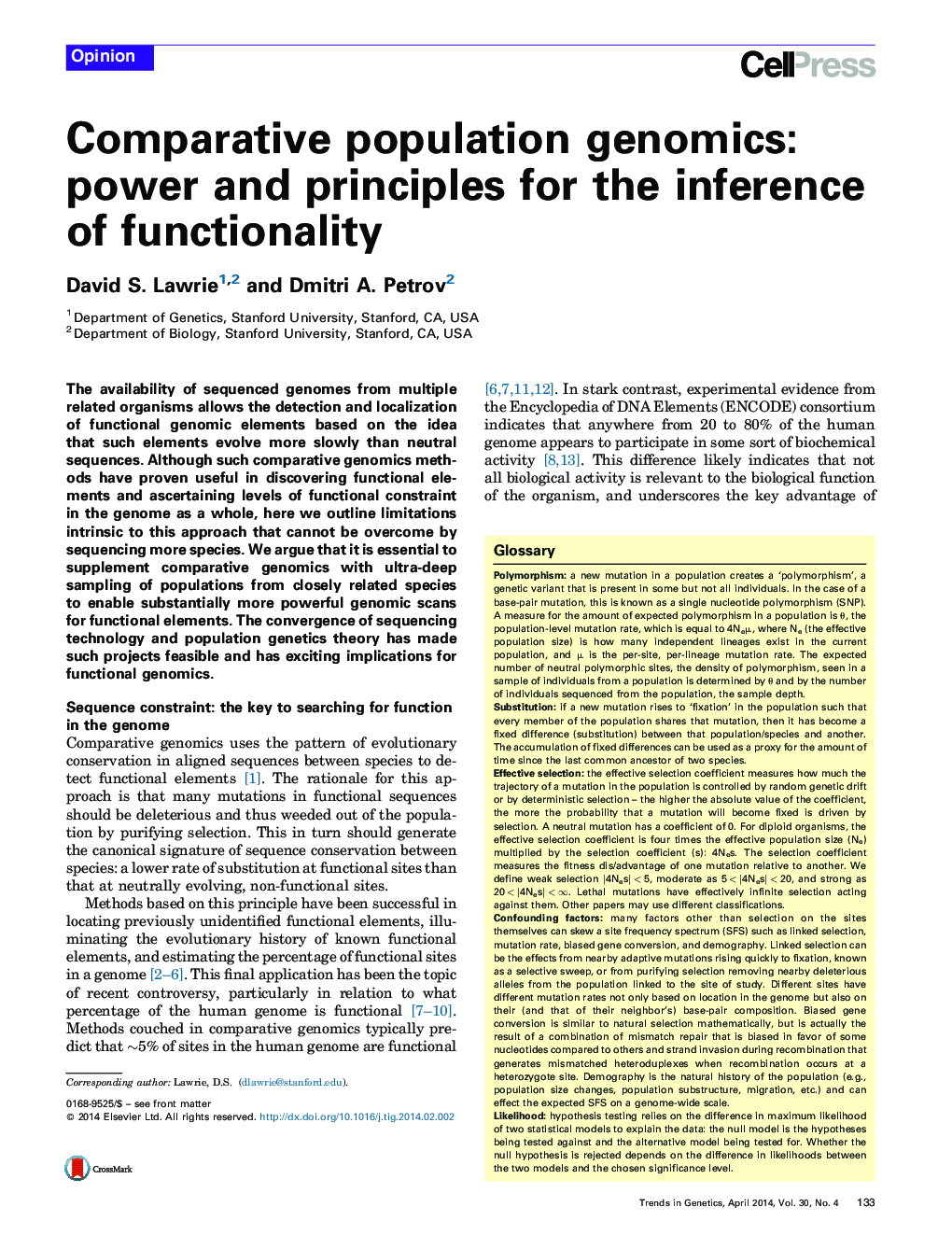| Article ID | Journal | Published Year | Pages | File Type |
|---|---|---|---|---|
| 2824770 | Trends in Genetics | 2014 | 7 Pages |
•Conservation of sequences among species indicates selection at functional elements.•Weak versus strong purifying selection cannot be distinguished using conservation.•SFS captures the distribution of selection coefficients across large numbers of sites.•Polymorphism data from multiple species increase the power of SFS using fewer sites.•Comparative population genomics methods combine polymorphism and conservation.
The availability of sequenced genomes from multiple related organisms allows the detection and localization of functional genomic elements based on the idea that such elements evolve more slowly than neutral sequences. Although such comparative genomics methods have proven useful in discovering functional elements and ascertaining levels of functional constraint in the genome as a whole, here we outline limitations intrinsic to this approach that cannot be overcome by sequencing more species. We argue that it is essential to supplement comparative genomics with ultra-deep sampling of populations from closely related species to enable substantially more powerful genomic scans for functional elements. The convergence of sequencing technology and population genetics theory has made such projects feasible and has exciting implications for functional genomics.
